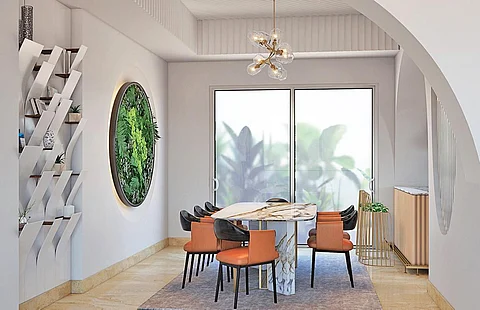

While Japan and Scandinavia may be in totally different regions of the world and almost over 8,000 km apart, it is interesting to note that both countries share some common philosophies when it comes to underlying principles like minimalism, simplicity and in being one with nature. The same premise applies even to their idea of home décor, in that both these regions believe in function-driven, comfortable, eco-friendly and simple interiors.
Derived from the words Japanese and Scandinavia, “Japandi” refers to the combination of these two styles and is all about crafting interiors with an aesthetic hybrid of both these basic philosophies. “Japandi style refers to home interiors that are replete with warm, rustic vibes depicting the Nordic style. At the same time the décor is also sleek, functional and painted in rich hues to add to the warmth like the Zen style. Although both Japanese and Scandinavian styles are not new to the world, the Japandi style of décor is relatively new and is fast garnering eye balls across the world,” says Hemil Parikh, Founder, Elysium Abodes LLP.
While Japandi includes crucial elements and key ideas from both Japanese and Scandinavian styles, this style is less casual than Scandinavian interiors but more relaxed than Japanese interiors. “The Scandinavian style focuses more on a minimalistic approach which includes comfort and functionality with spaces being light, open and airy. The colour palette is minimal too and the interiors are subtle and uncluttered. The Japanese style of décor is rooted in tradition and the décor ensures a balance and harmony with nature. It relies on Japanese wabi-sabi concept, which finds perfection in imperfection,” says Rishabh Sarpal, Conceptualise Interior Designer, Founder of Rishabh Sarpal Atelier.
How to get the look? Start by reducing clutter as Japandi style clearly showcases presence of open spaces. This can be done by having built-ins that are functional as well as multipurpose furniture that not only save space but are smart and sleek. Incorporating pastel colours is another way. “Soft pastels are a perfect way to introduce colour into a space without that colour drawing too much attention to itself. Pastels and subtle contrasts aid in seamless visual communication of the space to the senses,” says Bhawana Bhatnagar, Interior Stylist, Founder of Casa Exotique.

It is important to note that the two regions have similarities and stark contrasts hence the colours used in their styles also depict the same. The palette of colours in a Japandi room includes a dark and neutral foundation with contrasting lighter shades. “Try mixing dark hues with light woods and make sure that the accents are monochromatic as well,” adds Sarpal.
When it comes to furniture, Scandi style is all about clean lines and light-coloured wood, whereas Japanese furniture is lower to the ground, has curved finishes and is of a darker shade. Japandi style involves mixing and matching these two furniture styles to put together functional yet stylish pieces. “A combination of these clear lines and curved finishes with a mixed tone of woods will add uniqueness to the décor while still maintaining the bottomline of sustainability and simple décor,” adds Parikh.
When it comes to accessories, avoid any piece of décor that does not have utility. While Scandinavian décor is more of rugs and throw pillows owing to the weather there, Japanese décor has vases and bowls that are more on the utilities side. Adding greens, however, is a definite yes. “You just have to ensure that accessories are subtle and in tune with the rest of the décor. A bathtub placed on a rugged stone slab or stone stands for plants bring out an instant wow,” adds Bhatnagar.
Always remember, decluttering is key and hoarding is a big no. Do not use a lot of patterns like lines, curves and checks as they may be overpowering and defeat the entire process of a simplified style. Simple stripes or a touch of shibori is enough to make your interior feel alive. Use rustic hues and earthy, natural materials. Last but not the least, be open to a little bit of imperfection as life too is not always perfect and one’s home is a mirror of how we live.